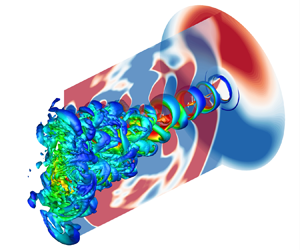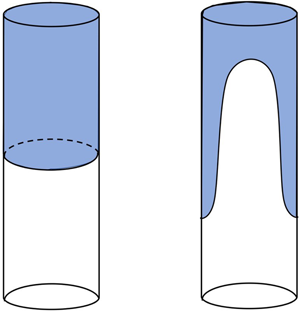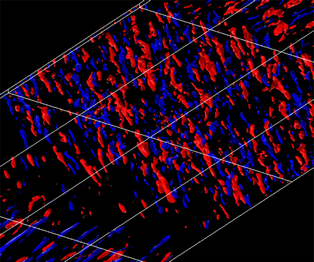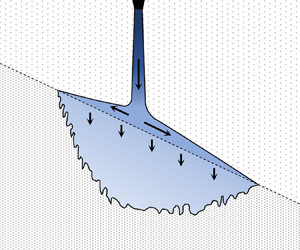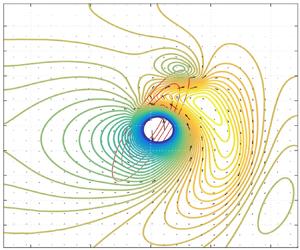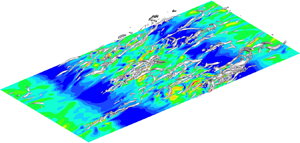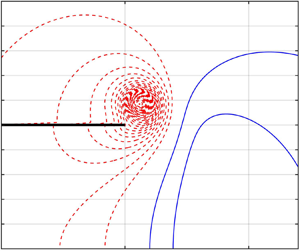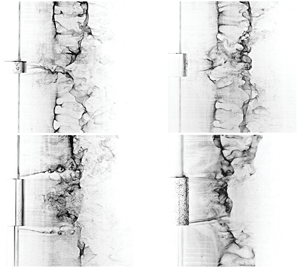Contents
JFM Papers
Acoustic feedback loops for screech tones of underexpanded free round jets at different modes
-
- Published online by Cambridge University Press:
- 08 September 2020, A17
-
- Article
- Export citation
Symmetry-breaking bifurcations and hysteresis in compressible Taylor–Couette flow of a dense gas: a molecular dynamics study
-
- Published online by Cambridge University Press:
- 08 September 2020, A18
-
- Article
- Export citation
Taylor drop in a closed vertical pipe
-
- Published online by Cambridge University Press:
- 08 September 2020, A19
-
- Article
-
- You have access
- Open access
- HTML
- Export citation
Direct numerical simulation of a non-equilibrium three-dimensional turbulent boundary layer over a flat plate
-
- Published online by Cambridge University Press:
- 09 September 2020, A20
-
- Article
- Export citation
Size-dependent spontaneous oscillations of Leidenfrost droplets
-
- Published online by Cambridge University Press:
- 09 September 2020, A21
-
- Article
- Export citation
Isolated buoyant convection in a two-layered porous medium with an inclined permeability jump
-
- Published online by Cambridge University Press:
- 09 September 2020, A22
-
- Article
- Export citation
Active swimmers interacting with stratified fluids during collective vertical migration
-
- Published online by Cambridge University Press:
- 09 September 2020, A23
-
- Article
- Export citation
Evolution, propagation and interactions with topography of hurricane-like vortices in a moist-convective rotating shallow-water model
-
- Published online by Cambridge University Press:
- 10 September 2020, A24
-
- Article
- Export citation
Direct numerical simulation of stratified Ekman layers over a periodic rough surface
-
- Published online by Cambridge University Press:
- 10 September 2020, A25
-
- Article
-
- You have access
- Open access
- HTML
- Export citation
Bifurcation and stability of downflowing gyrotactic micro-organism suspensions in a vertical pipe
-
- Published online by Cambridge University Press:
- 16 September 2020, A26
-
- Article
- Export citation
Development of the impulse and thrust for laminar starting jets with finite discharged volume
-
- Published online by Cambridge University Press:
- 14 September 2020, A27
-
- Article
- Export citation
Collision-induced breakage of agglomerates in homogenous isotropic turbulence laden with adhesive particles
-
- Published online by Cambridge University Press:
- 14 September 2020, A28
-
- Article
- Export citation
Vortex shedding from cylinders with two step discontinuities in diameter
-
- Published online by Cambridge University Press:
- 14 September 2020, A29
-
- Article
- Export citation
Analysis of unsteady flow effects on the Betz limit for flapping foil power generation
-
- Published online by Cambridge University Press:
- 14 September 2020, A30
-
- Article
- Export citation
Law of the wall for a temporally evolving vertical natural convection boundary layer
-
- Published online by Cambridge University Press:
- 14 September 2020, A31
-
- Article
- Export citation
Front Cover (OFC, IFC) and matter
FLM volume 902 Cover and Front matter
-
- Published online by Cambridge University Press:
- 18 September 2020, p. f1
-
- Article
-
- You have access
- Export citation

